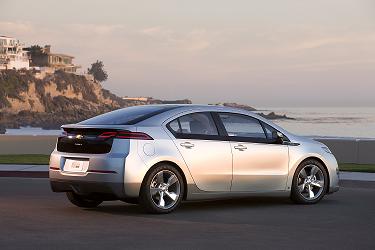
| Monday, January 10, 2011 | Archives | Advertise | Online Buyer's Guide | FLEETSolutions |
2011 Chevy Volt Builds On Earlier GM Electrification Efforts
 The Chevrolet Volts now being delivered to enthusiastic retail customers would not have been possible without the lessons learned from previous General Motors electrification efforts. Many of the technologies resulting from the development of the ground-breaking EV1 in the 1990s, the Two-Mode Hybrid SUVs and pickup trucks, and the fuel cell Chevrolet Equinox used for the Project Driveway program are part of the Volt. "The band is back together -- only this time there are fans," said former EV1 Chief Engineer Jon Bereisa. Regardless of whether a vehicle uses a hydrogen-powered fuel cell, a battery charged from the grid, or just recovered kinetic energy from a hybrid drive system, the electric propulsion systems feature many common components and sub-systems. Traction motors and generators, power electronics and battery management systems work in much the same way for each. Improving one type can benefit all. Each alternative drive vehicle also relies on systems like electric power assisted steering, electronic brake control, and electric climate control. While earlier vehicles were not built in mass-production numbers, many of the engineers that created them also contributed to the Volt development, including Chief Engineer Andrew Farah. "By adapting sub-systems such as the EV1-descended motors developed for the front-wheel drive hybrid system and electronically controlled brakes from the fuel cell Equinox, the engineers were able to focus more resources on the new lithium ion battery and overall vehicle integration," said Farah. The hardware engineers weren't the only ones to benefit from the earlier programs. "A new drive system like this involves a lot of complex control software such as the regenerative brake blending which benefited from the Two-Mode Hybrid development." |
 |
NAFA Fleet Management Association 125 Village Blvd., Suite 200 Princeton, NJ 08540 Telephone: 609.720.0882 Fax: 609.452.8004 |






